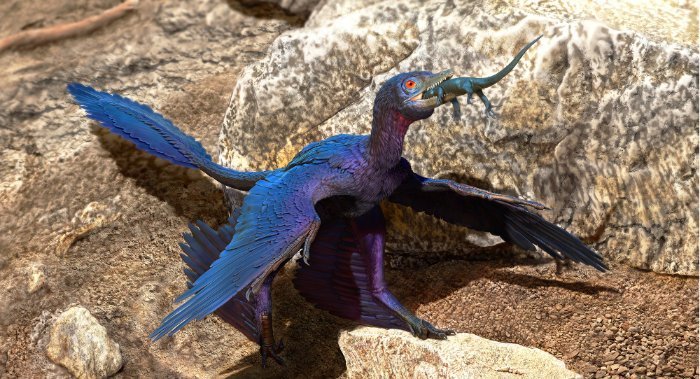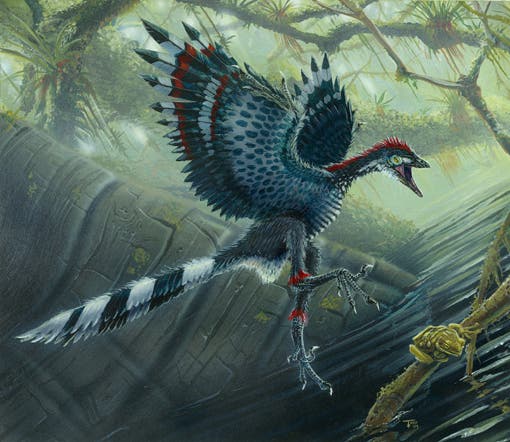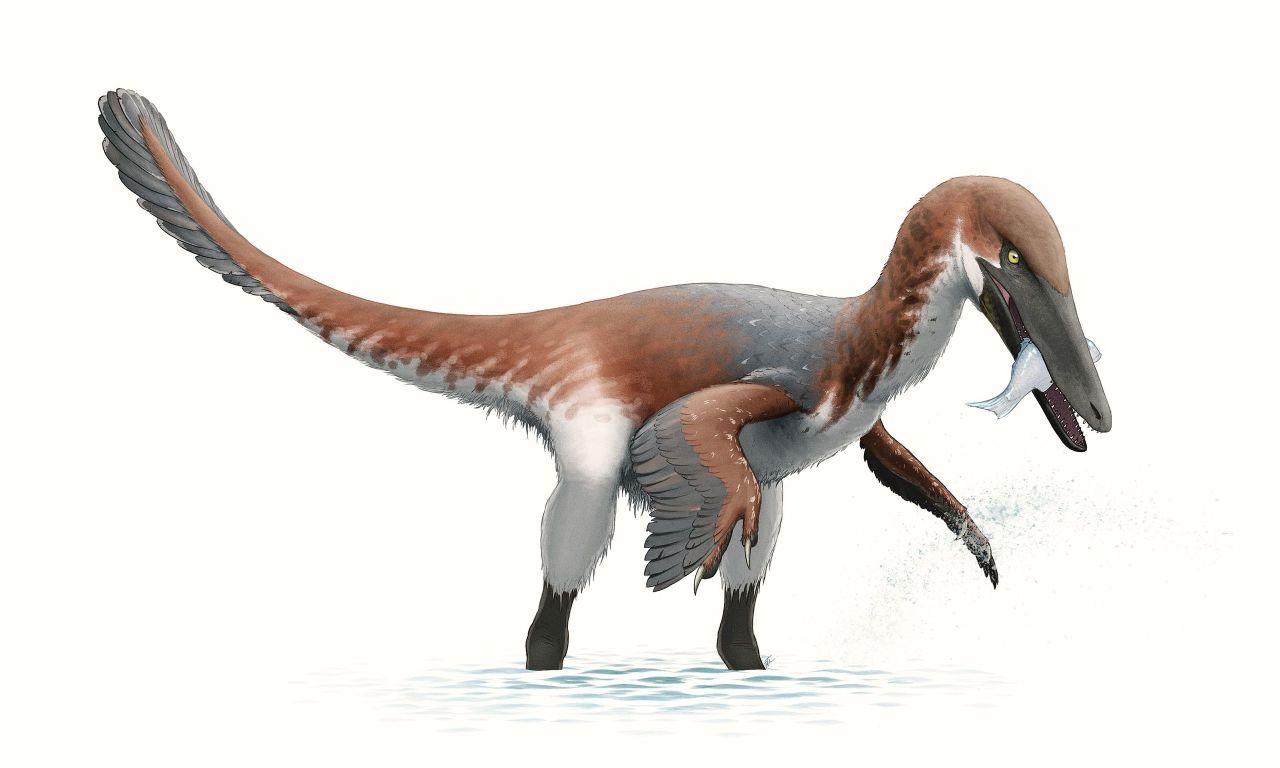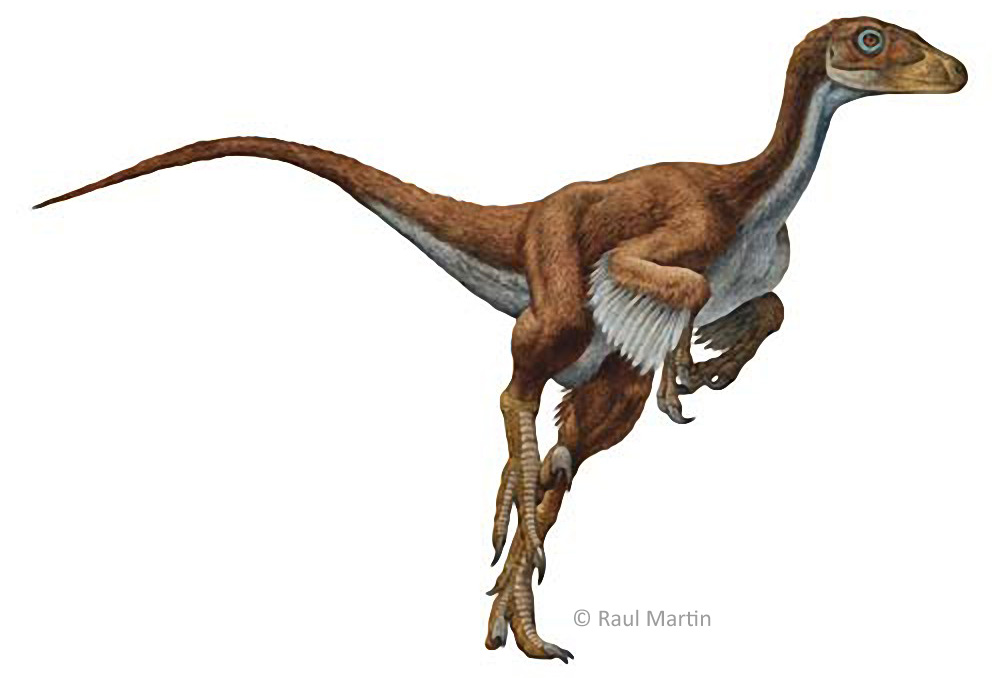1. Hesperornis would be a good choice for the Lagoons ! ....that would be great

!
... but the other 3 are to similar to existing ingam species.
So here my 3 other suggestions.
2. Microraptor ( 80 - 120 cm long ) ..... running and climbing on rocks/trees and than gliding back to hunt or escape attacks from pterosaurs etc. Uses the insectfeeder.
3. Archaeopteryx( 70 cm wingspan ) .... running and short flights only. Uses the Insectfeeder. ( As the first known Feathered Dinosaur ever discovered its a shame not to have it ingame !
4. Austroraptor ( 6m long) .... first and only fisheating Raptor for JWE II that would use the fishfeeder !
( alternative to NO. 4 ......5. Dromaeosaurus ( 2m Long ) .... first ever described "Raptor" and much smaller in size than our other Raptors.)
I think Austroraptor, Archaeopteryx, and Microraptor could work nicely in this pack. I think Dromaeosaurus might look too much like some of the other raptors we already have in the game. To be honest, I think I would replace Dromaeosaurus with one of the following species:
Balaur bondoc, A basal avialan species found in the Densuş-Ciula and Sebeș Formations in Romania that lived during the late Cretaceous period. It could grow to be around 1.8–2.5 meters (5.9–8.2 ft.) long and a body mass of 15 kilograms (33 lb.). It used to be classified as a Dromaeosaurid species, but more recent research suggests it was basal avialan that was more closely related to modern birds. Its exact diet is unknown as all of the specimens found so far have been found without skulls, which has been intensely debated. Some researchers thought it was carnivorous based on it possibly being related to raptors, while others argue it was omnivorous or herbivorous based based on it being avialan and the structure of some of its bones. It lost the ability to fly, which is thought to have been evolved as an adaption to living on an island.
Epidexipteryx, a genus of small paravian dinosaurs that lived during the middle or late Jurassic period that was found in the Daohugou Beds of Inner Mongolia, China (about 160 or 154 mya). It known from one fossil specimen in the collection of the Institute of Vertebrate Paleontology and Paleoanthropology in Beijing. Fossil evidence suggests its body was covered in feathers. Its name, Epidexipteryx hui, means Hu's display feather, and its Chinese name Hushi Yaolong ("Hu Yaoming's dragon") were coined in memory of paleomammologist Hu Yaoming. Epidexipteryx represents the earliest known example of ornamental feathers in the fossil record. It is thought to be capable of gliding.
Serikornis, A genus of small, feathered anchiornithid dinosaur from the Upper Jurassic Tiaojishan Formation of Liaoning, China. While a specimen was found to have had evidence of possessing feathered wings, it is believed to have not been able to fly. Its name means "Ge Sun's silk bird", a reference to the plumulaceous-like body covering evident in the fossil. The specimen's nickname, "Silky", refers to the striking resemblance of the delicate hindlimb filaments to the modern Silky breed of domestic chicken.
Rahonavis, A genus of bird-like theropods from the Late Cretaceous of what is now northwestern Madagascar. It is known from a partial skeleton found in Maevarano Formation rocks at a quarry near Berivotra, Mahajanga Province. It was originally the first African coelurosaur until the Nqwebasaurus was discovered in 2000. The name Rahonavis means, approximately, "cloud menace bird", from Malagasy rahona (RA-hoo-na, "cloud" or "menace") + Latin avis "bird". It is believed that Rahonavis was capable of powered flight, but this is still being debated.
Yi qi, A genus of scansoriopterygid dinosaurs from the Late Jurassic of China. It is known from a single fossil specimen of an adult individual found in Middle or Late Jurassic Tiaojishan Formation of Hebei, China, approximately 159 million years ago. It was a small, possibly tree-dwelling (arboreal) animal. Like other scansoriopterygids, Yi possessed an unusual, elongated third finger, that appears to have helped to support a membranous gliding plane made of skin. The wings of Yi qi were also supported by a long, bony strut attached to the wrist. This modified wrist bone and membrane-based plane is unique among all known dinosaurs, and might have resulted in wings similar in appearance to those of bats. Researchers believe it was capable of gliding and given it could only glide limited distances, it likely preferred to live in forests.
Hesperornithoides, A genus of troodontid theropod dinosaur that lived in North America during the Late Jurassic period. It was discovered accidentally in Jimbo Quarry of the Morrison Formation, overlying the excavation site of Supersaurus vivianae, near Douglas, Wyoming. The accidental discovery of the skeleton led to some of the fossils being damaged or lost. The generic name is derived from the Greek Ἑσπερίς, Hesperis, "western", ὄρνις, ornis, "bird", and ~eides, "form". The specific name honours the Miessler family for its support of the project. It is believed to have lived in a wetland environment.
Mei long, A species of duck-sized troodontid dinosaur that was first unearthed by paleontologists from the Yixian Formation in Liaoning, China in 2004. Mei lived during the Early Cretaceous period. Its name means sleeping dragon. It is believed to have fed on small lizards and insects on the forest floor. Researchers believe it may have been able climb trees in order avoid large predators. I suspect the unidentified troodontid species shown in an episode of prehistoric park that took place prehistoric China were this species, because Nigel Marvin said their name meant sleeping dragon. (In the middle of the picture)
Latenivenatrix, a genus of large troodontid from the late Cretaceous period found in the Dinosaur Park Formation strata from Alberta, Canada. It grew to between 3–3.5 meters (9.8–11.5 ft.)long. Latenivenatrix is the largest troodontid known. Its name means hiding huntress.
Natovenator, a genus of halszkaraptorine dromaeosaurid dinosaur from the Late Cretaceous Barun Goyot Formation of Mongolia. It is regarded as being an efficient swimming dromaeosaurid with a semiaquatic lifestyle. The multiple convergences with other aquatic vertebrates include an elongated snout with numerous teeth, delayed replacement pattern of premaxillary teeth, a complex neurovascular system on the snout tip, elongated neck and vertebral zygapophyses, and a retracted, long naris (nostril opening). The generic name, "Natovenator", is derived from the Latin words "nato", meaning "to swim", and "venator", meaning "hunter", in reference to its piscivorous diet and possible swimming behaviour. The specific name, "polydontus", is derived from the Greek words "polys", meaning "many", and "odous", meaning "tooth".
Mononykus, A genus of alvarezsaurid dinosaur that lived during the Late Cretaceous in what is now Asia on the Nemegt Formation, about 70 million years ago. It is estimated to have grown around 1 to 1.2 meters (3.3 to 3.9 feet) in length with a weight of 3.5 kilograms (7.7 lb.). It was an insectivore.
Bonapartenykus, A monospecific genus of alvarezsauroid dinosaur from Argentina that lived during the Late Cretaceous in what is now the upper Allen Formation of the Río Negro Province. It has an estimated length of 2.5 meters (8.2 ft.) and weight of 72 kilograms (159 lb.), making it the largest member of the clade Alvarezsauroidea. The genus name means José F. Bonaparte's claw, who was a famous paleontologist from Argentina.
Ornitholestes, A small theropod dinosaur of the late Jurassic (about 154 million years ago) found in the Brushy Basin Member of the Morrison Formation of Western Laurasia (the area that was to become North America). Ornitholestes was about 2 meters (6.6 ft.) long. While it is believed they mostly hunted small animals for food, they might have hunted larger prey, like a half-grown Camptosaurus, by hunting in packs. The genus name Ornitholestes means "bird robber" and is derived from the Greek ὄρνις/ornis, ornithos ("bird") and λῃστήσ/lestes ("robber"). The species name (O. hermanni) honors Adam Hermann, the head preparator at the Museum, who directed the restoration and mounting of the skeleton.
Chilesaurus, An extinct genus of herbivorous dinosaur that lived 145 million years ago (Mya) in the late Jurassic period of Chile. Showing a combination of traits from theropods, ornithischians, and sauropodomorphs, this genus has far-reaching implications for the evolution of dinosaurs. It measured roughly 3.2 m (10.5 ft) from nose to tail. he most unusual feature of Chilesaurus is its spatula-shaped, elongated teeth, obliquely pointing forwards. Such dentition would be unique in the Theropoda, where it has sometimes been recovered, and is typical for a herbivore, indicating Chilesaurus was a plant-eater.








